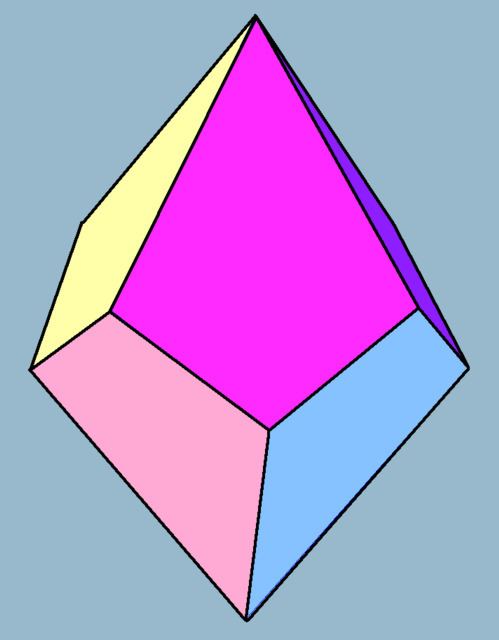 | ||
The tetragonal trapezohedron, or deltohedron, is the second in an infinite series of face-uniform polyhedra, which are dual to the antiprisms. It has eight faces, which are congruent kites, and is dual to the square antiprism.
Contents
In mesh generation
This shape has been used as a test case for hexahedral mesh generation, simplifying an earlier test case of Rob Schneider in the form of a square pyramid with its boundary subdivided into 16 quadrilaterals. In this context the tetragonal trapezohedron has also been called the cubical octahedron, quadrilateral octahedron, or octagonal spindle, because it has eight quadrilateral faces and is uniquely defined as a combinatorial polyhedron by that property. Adding four cuboids to a mesh for the cubical octahedron would also give a mesh for Schneider's pyramid. As a simply-connected polyhedron with an even number of quadrilateral faces, the cubical octahedron can be decomposed into topological cuboids with curved faces that meet face-to-face without subdividing the boundary quadrilaterals, and an explicit mesh of this type has been constructed. However, it is unclear whether a decomposition of this type can be obtained in which all the cuboids are convex polyhedra with flat faces.
Related polyhedra
The tetragonal trapezohedron is first in a series of dual snub polyhedra and tilings with face configuration V3.3.4.3.n.
